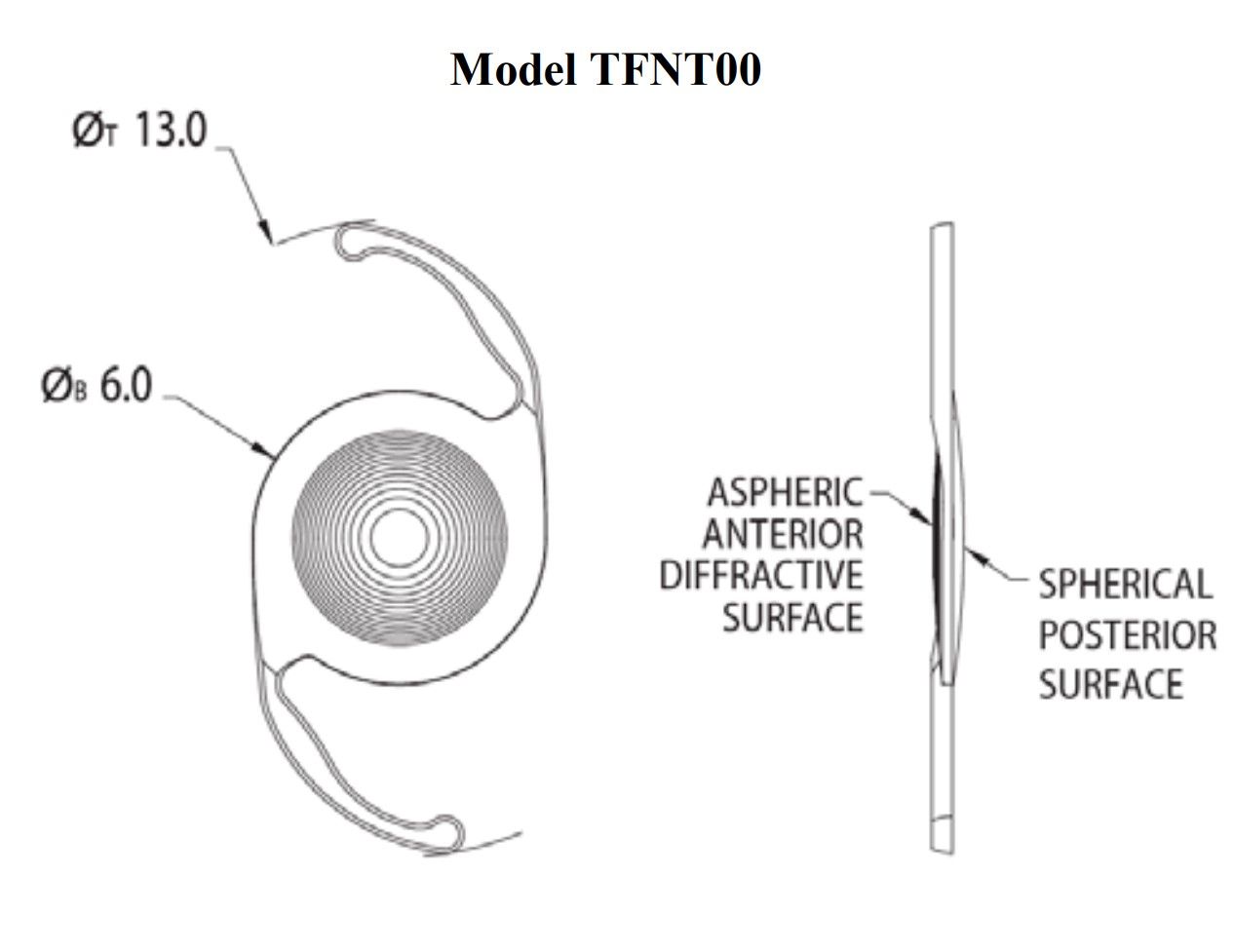We’re going to tell you everything you need to know about the PanOptix lens implant. For patients having cataract surgery or custom lens replacement, this is one of the most popular advanced technology lenses in the world. If you’d like to live a life free from glasses, read on to find out of the PanOptix IOL is the right lens implant option for you.
What is the PanOptix Lens Implant?
The PanOptix intraocular lens (IOL) is the first trifocal lens implant in the United States approved by the FDA in August 2019.
The implant is made of a biocompatible material and is designed to mimic the natural focusing abilities of the eye. It is inserted through a small incision in the front of the eye and placed in the same position as the natural lens.
The Panoptix lens implant has three focal points: one for distance vision, one for intermediate vision, and one for near vision. This allows it to provide a more natural range of vision and reduces the need for glasses or contact lenses after surgery.
How Does the PanOptix IOL Work?
The Panoptix lens works by diffracting light rays to different focal points so that patients can achieve vision at three different distances – distance, intermediate, and near.
The lens is manufactured with an array of concentric rings that split up incoming light rays to result in the trifocal effect. The rings simultaneously present the eye with three focal points. Therefore, unlike a pair of bifocal glasses, patients with PanOptix lenses are not required to look up or down when choosing distance or near vision.
When placed and centered within a patient’s capsular bag the lens is designed to stay for a lifetime.

How Does the PanOptix Multifocal Lens Differ from Other Multifocal Implants?
The PanOptix is the first trifocal lens implant in the United States. Bifocal lens implants only provide patients with two focal points. With bifocal lens implants, some patients would notice that they had good distance and near vision, but were lacking in the intermediate range. This intermediate range vision can be quite important for many people. Intermediate range vision includes the computer range, dashboard of the car, and kitchen countertop.
Does the PanOptix Trifocal Lens Work Like Trifocal Glasses?
In contrast to a pair of typical bifocal or progressive glasses, the PanOptix implant does not behave the same way. Patients will be glad to know they no longer need to look down in order to see closer, and there won’t be any distortion when looking left or right that is common with bifocal or trifocal glasses.
Are there Patients Who Should Not Get PanOptix Lenses?
Yes. There is no one-size-fits-all lens implant. The PanOptix is a great lens implant, but it’s not for everyone.
Patients with corneal problems, such as severe dry eye, or retinal problems may not be good candidates for the PanOptix lens implant.
In the FDA’s PanOptix clinical trial, the following patients were not allowed to participate for a variety of reasons. Here are some of the most common:
- Corneal abnormalities including corneal dystrophy, irregularity (including irregularity due to dry eye syndrome), inflammation or edema.
- Previous corneal transplant
- Previous refractive surgery (e.g. LASIK, PRK)
- Retinal conditions, such as retinal detachment, retinopathy from diabetes, and macular degeneration
- Patients with a predisposition to retinal detachment
- Amblyopia
- Optic nerve atrophy
- Glaucoma
This does not mean that patients with these conditions should absolutely not get the PanOptix. However, the FDA’s clinical trial did not include these patients. If you have any of these conditions, you should have a detailed conversation with your surgeon before choosing a lens implant.
Can there be PanOptix Lens Problems or Side Effects?
No lens implant is perfect. While the PanOptix results in some of the most satisfied patients in all of cataract surgery, there are some possible side effects.
Glare, Halos, Starburts
The benefits of PanOptix come from the rings that diffract light to create the trifocal effect. However, these rings also scatter light resulting in unwanted glare, halos, and starburst symptoms.
These were some of the most common symptoms of the PanOptix. The following are safety data from the FDA’s clinical trial:

Source: https://www.accessdata.fda.gov/cdrh_docs/pdf4/P040020S087B.pdf
From the table, you can see that only approximately 3% of patients reported severe glare, which was comparable to the monofocal IOL group, which was approximately 2%. However, there were more patients who reported severe halos and starbursts.
Despite these symptoms, PanOptix patients reported being overwhelmingly satisfied with their vision. Over 99% reported that they would choose the PanOptix if they had to do it all again.

Source: https://www.accessdata.fda.gov/cdrh_docs/pdf4/P040020S087B.pdf
So while it appears that patients may have glare, halos, or starbursts due to their PanOptix, the freedom from glasses and overall quality of vision is worth it for most.
Is There a PanOptix Toric Lens For Patients With Astigmatism?
Yes! The PanOptix comes in a toric version to correct astigmatism. The astigmatism correction is built into the lens implant. The shape of the lens implant balances out astigmatism in the cornea, resulting in clear vision without glasses or contacts.
What Is the PanOptix Lens Price?
Medical insurance does not cover the PanOptix lens implant. It is considered a non-covered service, and patients are required to pay an out-of-pocket expense for it. This additional expense can be as high as $5,000 per eye. However, the price varies by practice and by the surgeon.
What About Medicare? How Much Do PanOptix Lenses Cost With Medicare?
Medicare does not cover the PanOptix IOL. Patients must pay an additional out-of-pocket expense for this implant. However, this typically results in a lifetime of freedom from glasses. When considering the expense of bifocals and contacts for decades, the PanOptix is often the more cost-effective choice.
What is the Clareon PanOptix?
In 2021 Alcon launched the Clareon material for its intraocular lenses. The Clareon material is a proprietary hydrophobic acrylic material that offers several benefits over previous technology
- Exceptional clarity
- Long-term stability
- Reduced visual disturbances
- Smooth edge design
- Easy handling and manipulation
The Clareon material is used across Alcon’s portfolio of lens implants, including the PanOptix lens implant.
The PanOptix Lens Review Summary: Is It Right For You?
The PanOptix is one of the most popular advanced technology lens implants in the world. So many patients have achieved complete freedom from glasses. As always… There is no lens that is best for everyone. Have a conversation with your surgeon about which implant options are best for your eyes & lifestyle.
Source: https://www.accessdata.fda.gov/cdrh_docs/pdf4/P040020S087B.pdf










